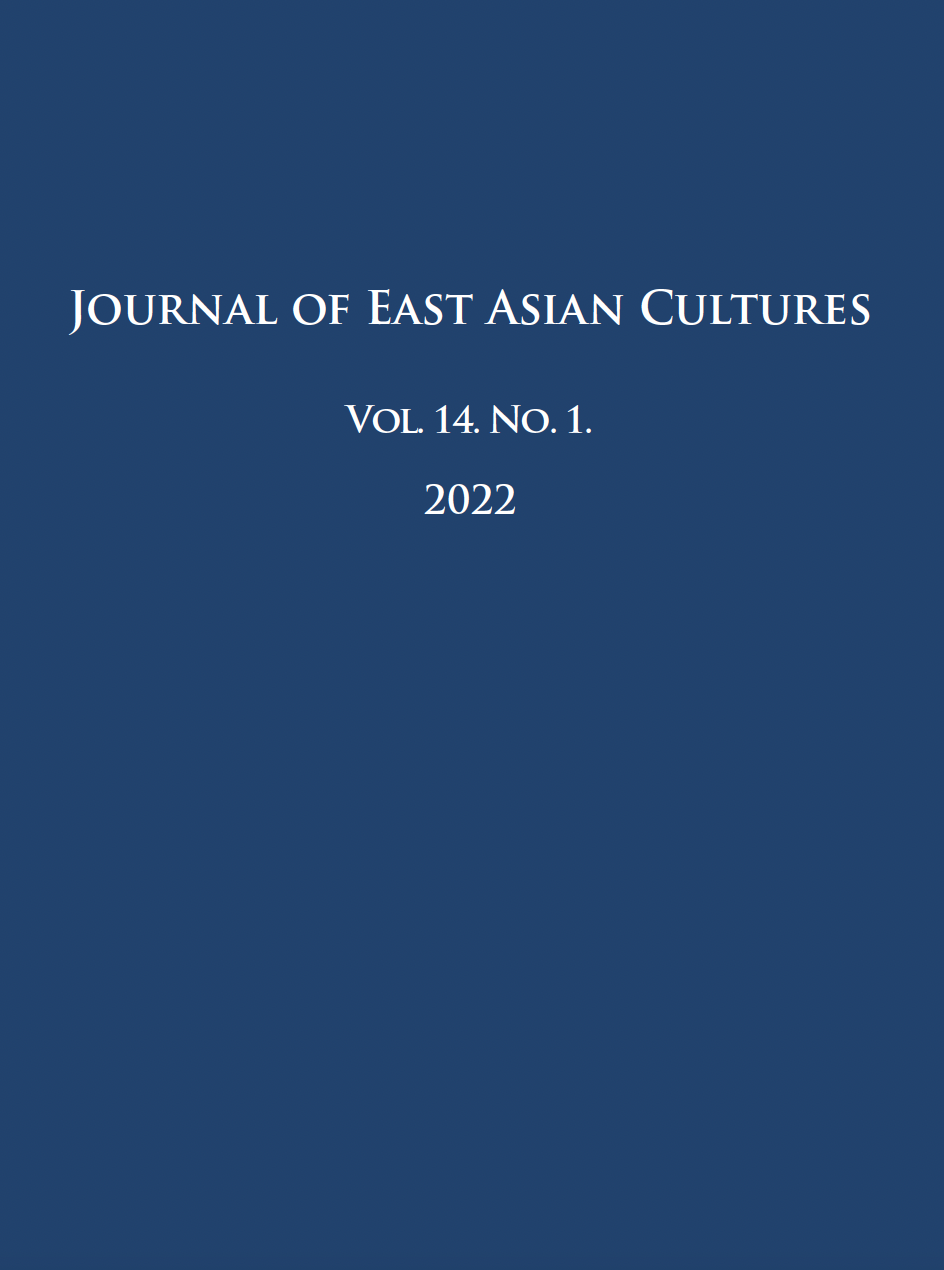Semantic Similarities and Differences of kong 空, ti 體, and li 理: A Case Study of the Treatise on Eighteen Kinds of Emptiness (Shiba kong lun 十八空論)
Megjelent 2022-11-22
Kulcsszavak
- kong 空,
- ti 體,
- li 理,
- Shiba kong lun 十八空 論,
- Paramārtha
- pudgala-dharma,
- daoli 道理,
- yong 用,
- kínai buddhizmus,
- üresség,
- princípium ...Tovább
Hogyan kell idézni
Copyright (c) 2022 Gediminas Giedraitis

This work is licensed under a Creative Commons Attribution-NonCommercial 4.0 International License.
Absztrakt
A tanulmány a kong 空 (üresség), a ti 體 (lényeg) és a li 理 (princípium) fogalmak szemantikai hasonlóságait és különbségeit vizsgálja a Shiba kong lun 十八空論 (Értekezés a tizennyolcféle ürességről) című íráson belül. Az értekezés szerzője feltételezhetően az indiai fordító, Paramārtha (Zhendi 真諦; 499–569), aki a kínai buddhista szöveghagyomány egyik legkiemelkedőbb fordítója és értelmezője.
A Shiba kong lun című értekezés alkalmas a kong, a ti és a li fogalmak szemantikai vizsgálatára, mivel a szöveg egyik célja feltehetően az indiai buddhista fogalmak jelentésének magyarázata volt a kínai közönség számára. A magyarázat indiai (például szkt. *pudgala-dharma; k. renfa 人法; személyek és dharmák), illetve kínai (például daoli 道理, a dao princípiuma) fogalmak alkalmazásával történik. A tizennyolcféle üresség magyarázata a ti 體 (lényeg) és a yong 用(funkció) kínai hermeneutikai keretrendszerén belül kerül bemutatásra, és ezzel szemléletes példaként szolgál arra, hogy az indiai buddhista eszmék miként kerültek be a kínai filozófia fogalomtárába.
Az értekezésben szereplő három fogalom magyarázata az olvasó számára rendkívül árnyalt és sokrétegű képet ad a tizennyolcféle ürességről, amely a magyarázat során ontológiai és ismeretelméleti jelentésekkel is gazdagodik. Ezenkívül az üresség különböző aspektusainak a szövegben található magyarázata a buddhizmus szoteriológiai céljához, a nirvāṇaeléréséhez is szorosan kapcsolódik.
Hivatkozások
- Shiba kong lun 十八空論. T31, no. 1616.
- Garfield, Jay (trans.) 1995. The Fundamental Wisdom of the Middle Way Nagarjuna's Mulamadhyamakakarika. New York: Oxford University Press.
- Garfield Jay – Westerhoff, Jan 2015. “Introduction: Madhyamaka and Yogācāra: Allies or Rivals?”. Jay L. Garfield – Jan Westerhoff (eds.) Madhyamaka and Yogācāra: Allies or Rivals? New York: Oxford University Press. https://doi.org/10.1093/acprof:oso/9780190231286.001.0001
- Hamar, Imre 2017. A kínai buddhizmus története [The History of Chinese Buddhism]. Budapest: ELTE Konfuciusz Intézet.
- Keng, Ching – Radich, Michael 2019. “Paramārtha.” Brill's Encyclopedia of Buddhism. Volume II: Lives. Ed. by Jonathan A. Silk (editor-in chief), Richard Bowring, Vincent Eltschinger, and Michael Radich. Leiden: Brill, 752–758.
- Lamotte, Éttiene (trans.) 1976. Le Traite de la Grande Vertu de Sagesse, Vol IV, Louvain-la-Neuve: Institut Orientaliste. English tr. Gelongma Karma Migme Chodron (2001).
- Lusthaus, Dan 2002. Buddhist Phenomenology: A Philosophical Investigation of Yogacara Buddhism and the Ch'eng Wei-shih Lun. London: Routledge.
- Muller, A. Charles 2016. “The Emergence of Essence-Function (ti-yong) 體用 Hermeneutics in the Sinification of Indic Buddhism. An Overview.” Critical Review of Buddhist Studies 19: 111–152.
- Paul, Diana 1982. “The Life and Times of Paramārtha (499–569).” The Journal of International Association of Buddhist Studies 5 (ed. A. K. Narain), 39–69.
- Radich, Michael 2012. “External Evidence Relating to Works Ascribed to Paramārtha, with a Focus on Traditional Chinese Catalogues.” In Shintai sanzō kenkyū ronshū 真諦三藏研究論集 [Studies of the Works and Influence of Paramartha], ed. by Funayama Tōru 船山徹. Kyoto: Kyōto daigaku jinbun kagaku kenkyūjo/Institute for Research in Humanities, Kyoto University, 39–102[L].
- Salvini, Mattia 2015. “Language and Existence in Madhyamaka and Yogācāra. Preliminary Reflections”. In: Jay L. Garfield – Jan Westerhoff (eds.) Madhyamaka and Yogācāra: Allies or Rivals? New York: Oxford University Press. https://doi.org/10.1093/acprof:oso/9780190231286.003.0003
- Thakchöe, Sonam 2015. “Reification and Nihilism: The Three-Nature Theory and Its Implications”. In: Jay L. Garfield – Jan Westerhoff (eds.) Madhyamaka and Yogācāra: Allies or Rivals? New York: Oxford University Press. https://doi.org/10.1093/acprof:oso/9780190231286.003.0004
- Toru, Funayama 2006. “Masquerading as Translation: Examples of Chinese Lectures by Indian Scholar-Monks in the Six Dynasties Period.” Asia Major 19.1/2: 39–55.
- Ziporyn, Brook 2013. Beyond Oneness and Difference: Li and Coherence in Chinese Buddhist Thought and its Antecedents. New York: State University of New York Press.
- Zürcher, Erik 2007. The Buddhist Conquest of China. The Spread and Adaption of Buddhism in Early Medieval China (Third Edition). Leiden: Brill, 2007.

